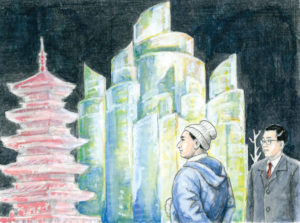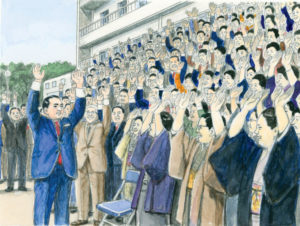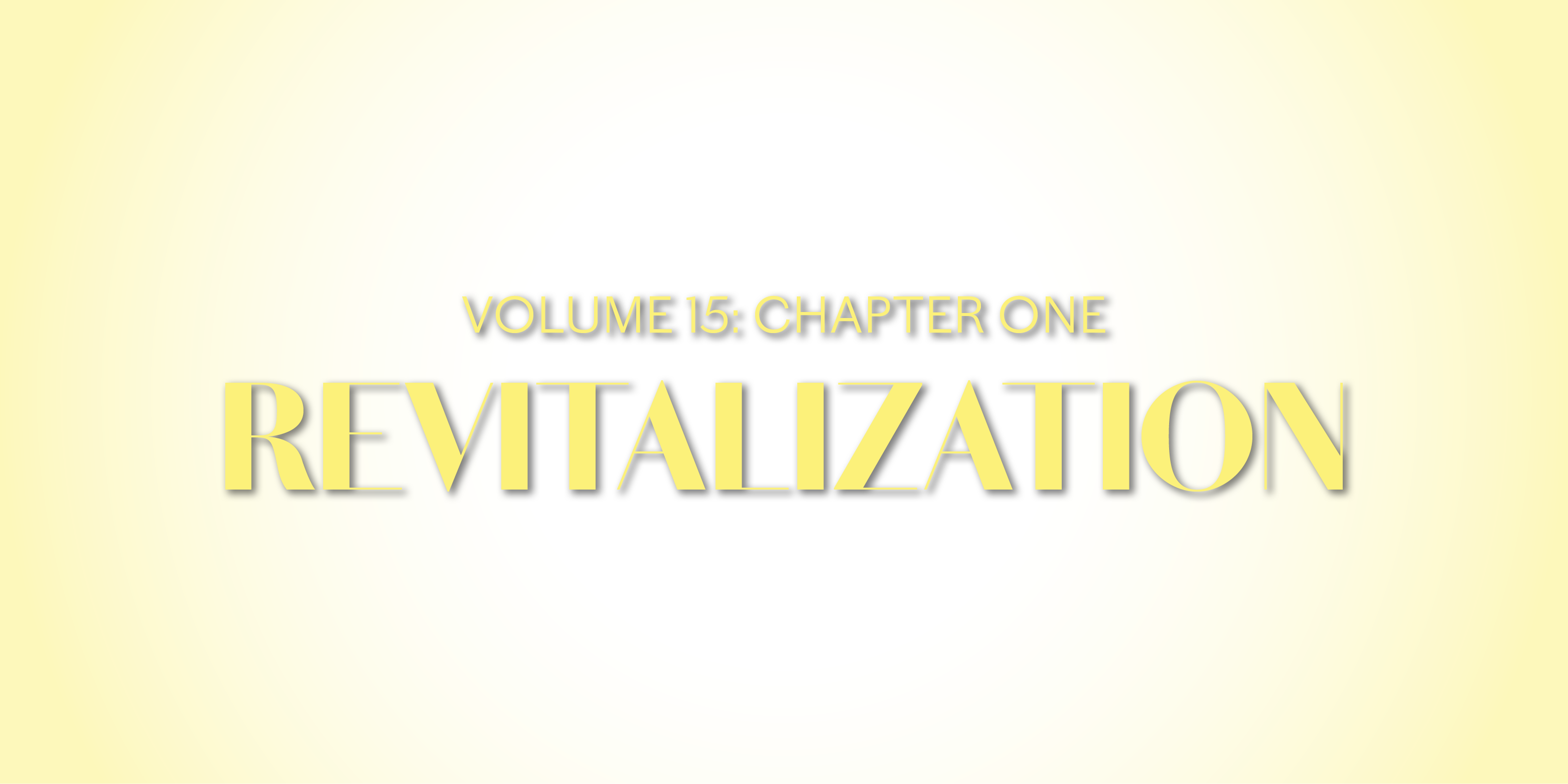Chapter Summary

Illustrations courtesy of Seikyo Press.
In 1970, the Soka Gakkai began full-fledged endeavors toward fostering a truly humane culture in society.
Soka Gakkai President Shin’ichi Yamamoto was painfully aware of the recent social trend to neglect the development of the human spirit in favor of convenience and wealth. The increasingly urgent issue of environmental pollution was most symbolic of this trend.
Using various forums, including writing essays in nationally distributed magazines, Shin’ichi explained Buddhist perspec-tives and solutions for resolving this problem. He identified the cause of pollution as human beings’ blind faith in progress and an insatiable desire to dominate the environment.
In 1953, people in the city of Minamata, a location that experienced untold suffering owing to environmental pollution, started joining the Soka Gakkai. While praying for the happiness of their friends, Soka Gakkai members, exemplifying lives of strength and conviction, became sources of hope for others in their community.
In 1974, Shin’ichi attended the first Minamata Friendship Gathering. He encouraged the members, saying, “I hope … that you will be the driving force for positive change in Minamata and create a brilliant history of revitalization in your hometown year after year” (The New Human Revolution, vol. 15, p. 38).
From 1970 to the spring of 1971, the Soka Gakkai hosted several events celebrating the arts and culture. Standing in the forefront of the Soka Gakkai’s great cultural movement, Shin’ichi composed a succession of poems, including the “Song of Youth.”
In 1971, the Soka Gakkai’s Year of Culture, he participated in the first Hokkaido Snow Culture Festival held in February. This festival included an ice sculpture, exhibition and group ski performances, among other events. Shin’ichi viewed the festival as the rise of a new culture created by the people and wholeheartedly praised all the members who worked hard to realize its success.
Unforgettable Scene

Illustrations courtesy of Seikyo Press.
Magnificent Victors in Life
In January 1974, Shin’ichi Yamamoto traveled to Kagoshima Prefecture to meet the members attending the first Minamata Friendship Gathering at the then Kyushu General Training Center in Kirishima. Aware that many of the members suffered from illness caused by pollution from the local chemical plant, he wanted to do everything he could to encourage them.
With deep emotion, Shin’ichi said to them: “ … I know that each of you has come here today after having triumphed over yourself, never shrinking from your own karma or allowing yourself to be defeated by despair. You are all magnificent victors in life! Please continue to become stronger and stronger and live out your lives to the fullest …
“I’m sure that some of you are suffering from illnesses caused by pollution. But the fact that you continue to live your lives energetically without being defeated is a source of hope for others and proof of the power of Buddhism.
“Having suffered so much, you have a right to become happy. You are the ones who will change our society. Let’s struggle together and crush the devilish nature pervading the universe and human life that created this pollution!”
“We will!” responded the members enthusiastically.
“How about giving three cheers to celebrate your courageous efforts and your magnificent victory!” Shin’ichi proposed.
The members raised their arms into the air as they vigorously cheered: “Hurrah! Hurrah! Hurrah!” Their rousing shouts echoed into the skies above Kirishima. (NHR-15, 34–35)
■ ■ ■
Shin’ichi continued to encourage the Minamata members regularly …
The damage caused by the pollution did not end with the chemical plant’s acknowledgement of fault and its payment of substantial reparations to the victims; the suffering of those afflicted by the mercury poisoning persisted. It was crucial, therefore, to give the victims courage to go on living and hope for the future, an effort that required a network of human support. Moreover, resolving the pollution problem at its core called for a fundamental reexamination of the values of modern society and the establishment of a new humanistic philosophy. This was the Soka Gakkai’s mission. (NHR-15, 38–39)
Key Passages
Real humanism must promote harmony between humanity and nature, or, more correctly, must be based on the principle that humanity and its environment are one and indivisible. (NHR-15, 17)
■ ■ ■
It is the people who change the course of society and the times. History is transformed when the people become wise and stand up as the protagonists of change. (NHR-15, 19)
You are reading {{ meterCount }} of {{ meterMax }} free premium articles

